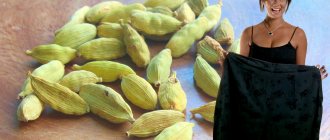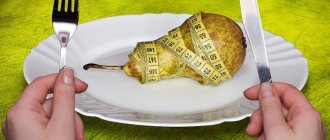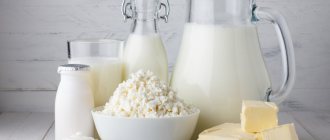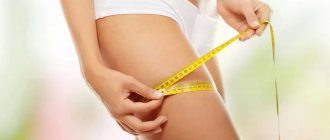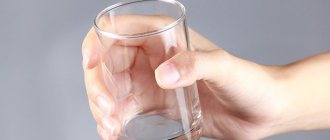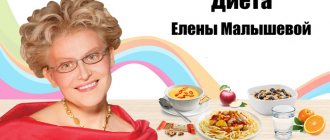A dry diet for weight loss is a relatively recent development by specialists, based on research into the amazing properties of fluids in the body. It allows you to quickly achieve the desired results.
However, the method should be used correctly to avoid unwanted consequences for the body.
What is a dry diet
This weight loss system does not impose a strict ban on water, since this can cause death, but it does involve a significant limitation of the volume of liquids consumed. Some athletes use a “dry diet” diet when they need to quickly emphasize muscle definition (not to be confused with a carbohydrate-free “cutting”). The effect is caused by a decrease in the amount of dispersed fluid, which is located in the intercellular space and gives additional weight and volume to the body. Features of this diet:
- In comparison with a large number of other weight loss schemes, it gives a very quick result, but it is difficult to maintain: for this you need to properly quit the diet.
- The effect you get from this technique is individual, since not every body is inclined to accumulate a large volume of fluid and thereby increase body weight.
- Through a dry diet, not only weight is reduced - the volume of problem areas and the severity of cellulite are reduced, since intercellular fluid appears everywhere. Additionally, “self-burning” of fat deposits occurs, which try to replenish the moisture deficit, but in parallel with this, muscle mass also decreases, since glycogen breakdown is observed.
- There are several varieties of such weight loss, differing in the degree of severity of the ban on liquids (so each person can choose an acceptable option for themselves), but all of them additionally include a refusal to eat salt.
- Some variations of this technique even prohibit unnecessary contact with liquid (not just ingestion), which is explained by its external absorption.
- A noticeable result will appear with additional dietary restrictions, which will simultaneously reduce the risk of significant weight gain after weight loss is completed.
Recommended for:
Some experts even find benefits in dry nutrition for the whole body, and not just in the matter of losing weight, when you need to remove excess fluid. For this reason, it is recommended to adhere to such a diet for a short period of time for people who have:
- obesity (all stages);
- pulmonary tuberculosis;
- tendency to allergies;
- non-healing wounds, trophic ulcers;
- skin diseases;
- any internal inflammatory processes;
- frequent diarrhea (dry mode is indicated during an attack);
- joint diseases (arthritis, rheumatism, polyarthritis);
- ovarian adenoma, tumors, endometriosis, infertility;
- bronchial asthma, pneumonia.
Pros and cons of the diet
In one day following the dry system, a person can lose 1 kg of weight, so after a week of weight loss you can see minus 5–7 kg. This point is considered the main advantage of a water-free diet, for the sake of which some people endure all the disadvantages. Additional benefits:
- lack of hunger (if we consider the classical method);
- balanced diet;
- breakdown of fat deposits;
- acceleration of tissue regeneration;
- rejuvenation of the epidermis;
- activation of metabolism;
- removal of puffiness;
- lowering cholesterol levels;
- cleansing the blood, normalizing its acidity.
There are fewer disadvantages in number, but they are more significant in terms of significance for the body. A water-free diet is life-threatening because it disrupts the balance of minerals and can provoke seizures and harm the heart. Excess fluid should be removed in an amount of 20% (of the total body weight) or less: if the figure exceeds 25%, the likelihood of side effects is almost absolute. The subjective disadvantages include the quickly disappearing result. Obvious disadvantages of a dry weight loss regimen are deterioration in well-being:
- weakness, dizziness;
- increased irritability;
- constant thirst;
- constipation, disorders of the gastrointestinal tract;
- loss of performance, lethargy;
- nausea, fever.
The harm of breakfast cereals
The main complaint about breakfast cereals is the large amount of sugar. Due to the high sucrose content, blood sugar levels also increase. As a rule, after a couple of hours the sugar begins to “fall”. If the body is healthy, a person may experience a strong feeling of hunger, general weakness and drowsiness. However, if you have a chronic disease, you may experience worse symptoms - headache, rapid heartbeat, fear and anxiety, tremors and nausea.
The second possible disadvantage is an allergy to gluten, cereal pollen or nuts.
Rules
There are few requirements for the classic dry method: the main thing is not to drink more than 1 liter of liquid per day. This does not only mean clean water - any drinks, broths, purees, smoothies should also be taken into account. Additionally, there are some basic rules:
- The calorie content of the diet should be reduced by 20% from that recommended for you (an individual indicator is calculated);
- Foods that retain moisture in the body are removed from the menu;
- meals are fractional, the interval is 2–3 hours;
- before starting dry weight loss, you should carry out preparations that will help you endure this tough system more easily;
- if this is the first experiment, the technique is followed for only a day and in case of any significant adverse reactions it is completed ahead of schedule;
- do not maintain a dry regime for more than a week;
- do not forget about a competent way out in order to carefully return the body to its usual water balance;
- exclude physical activity.
Diet rules
Every diet requires proper entry. In this case, the preparatory stage ideally takes two weeks. It assumes:
- rejection of bad habits;
- exclusion of salt, refined sugar, sweeteners, heavy foods.
By the end of this period, you should switch to the list of products specified in the diet. However, with maintaining the usual volume of drinking water.
After switching to a diet, you need to add the following rules to your daily routine:
- limiting fluid intake to one liter per day;
- the break between meals should not exceed 2-3 hours;
- daily caloric intake is reduced by approximately 20%;
- Foods that can retain water in the body are removed from the diet.
A method of body correction with partial abstinence from water and some products is considered more suitable for use in everyday life.
Some are limited to only a diet of breakfast cereals. In this case, the basis of nutrition will be dishes rich in lean animal proteins and complex carbohydrates.
More dangerous methods of losing weight include a strict diet that completely excludes any food and water for several days.
It is worth switching to such emergency measures only if more gentle methods have not helped.
It is important to first visit a nutritionist, since strict diets can cause serious harm to health.
Kinds
All variations of dry weight loss methods are usually divided into 2 large groups: gentle and hard. The latter is a ban on contact with water inside and outside, the first is only inside. Experts continue to argue about how reasonable rigid systems are, but if we are talking about gaining harmony in a short time and for just a day (the Cinderella effect), this may be the way out. The main types of diets of both groups:
- Classic - eliminating foods that retain fluid, creating a low-calorie daily menu with an emphasis on plant foods and a minimum amount of animal protein. You can drink up to 500 ml of liquids; weight loss does not last longer than a week. Some versions imply a meager and rigid menu, where meals cannot be interchanged.
- Cascade – gentle alternation of a fast with low-calorie dry food every other day. The duration of weight loss is 5 days. An alternative version (more severe): when, after 3 days of waterless fasting, a break is taken for 3 weeks (for a better effect, on a low-calorie diet) and the fast is repeated.
- The Lavrova method is a therapeutic system discussed with a doctor. Involves strict exclusion of water (even without external contact), requires preliminary preparation (lasts 14 days). It is based on alternating dry fasting (fasting) and eating exclusively plant foods in a regime of 1/1 to 5/5 (equal ratio of “dry” and “vegetable” days). The maximum duration of such a diet is 3 weeks.
- The Filonov method is a system designed for 3 stages (each lasting a month). The beginning is to cleanse the body: eat vegetables and fruits, fermented milk products, meat without fat for 2 weeks. After 7 days, enemas are given, and the final week is spent on buckwheat without salt and ends with a fasting day on water. Then the scheme becomes more stringent: 1 day on the water, then 6 days of a classic diet. After two days on the water, and in the new week (3rd week) - three. In week 4, any 2 days are devoted to vegetables and fruits, and the rest of the time they fast. The last month involves repeating 2, but in a dry format where there were water days.
- Shchennikov's method requires passage under the supervision of an instructor, involves preparation, dry fasting for 11 days and a long recovery. You are allowed to take a shower, wash your hands and hair, but you cannot brush your teeth (take liquids into your mouth, even for rinsing).
- A dry fasting day is the simplest option with a minimum number of side reactions, helps you lose 1–3 kg and involves a complete fast: no food, no water. Such unloading schemes are used with a break of a week or more. You should rinse your mouth several times a day to remove plaque.
- Anhydrous diets for 3–7 days are a long fasting fast, which is considered very dangerous. Can be used once a month (3 days) or a year (for 5–7 days). They require lengthy preparation, especially week-long preparation: before starting, drink a liter of non-carbonated mineral water.
- Muesli is a specific and controversial type of diet based on breakfast cereals: wheat, oatmeal, and rice flakes with a minimal amount of additives are taken as the basis. They are filled with yogurt, milk, kefir (per day - 0.2 liters in total). During the day they eat only 120–150 g (of dry product), up to 200 g of lean meat/fish, and the same amount of fruits and vegetables. You can drink up to 0.6 liters of water, weight loss is short-lived: 3–5 days.
Types of breakfast cereals
Bran.
This is the oldest of all types of breakfast cereals, created from the hard shell of the grain, which is not used to make flour. The bran of wheat, oat, buckwheat, barley, rice and other grains contains a large amount of amino acids, protein and microelements. In addition, due to the fiber in its composition, bran is an excellent way to cleanse the stomach and help in the process of losing weight.
Flakes.
The history of the origin of the most common corn flakes began with a curiosity. At the end of the 19th century, American sexologist John Kellogg and his brother Will left leftover cornmeal mixed with water on the stove after preparing breakfast. By the time they returned, the dough had dried out into flakes and lumps. The thrifty Kellogs did not throw away the dough, but fried it and got crispy, delicious flakes. Now the Kellogg Company is America's largest manufacturer of breakfast cereals and instant foods, and corn flakes have become one of the symbols of the American breakfast.
Muesli.
A type of breakfast cereal created from raw or baked cereals, bran, dried fruits, wheat germ, dried berries, chopped nuts, honey and spices. In general, muesli was invented in 1900 by the Swiss doctor Maximilian Oskar Bircher-Benner for the patients of his hospital, but half a century later it became one of the most popular products for those who adhere to diets and lead a healthy lifestyle.
Balloons.
Regular and chocolate balls, figures and rings (and also the famous corn sticks) are the most technologically new type of breakfast cereal. It is created from specially prepared cereals using the extrusion method, when a press squeezes out products of a certain shape from plastic foam dough.
Permitted and prohibited products
The most severe versions of the anhydrous diet involve absolute fasting, but most people are advised to try the gentler classic variety. According to it, you should avoid foods that stimulate thirst and prevent the removal of moisture:
- canned food;
- pickles;
- smoked;
- sweets (confectionery, sugar, jam);
- salt;
- animal fats;
- fast food;
- semi-finished products;
- coffee;
- sweet drinks, especially carbonated drinks;
- alcohol;
- bakery products;
- dishes with spices.
The diet is dry, so any juices, mineral water, broths, jelly, fermented milk drinks, tea are eliminated from the diet. You do not prepare soups, but porridges are cooked crumbly, with a minimum amount of liquid, which should evaporate well. Allowed products in the classic version of this weight loss technique are:
- skim cheese;
- low-fat fish: hake, cod, flounder, tuna, pike, bream;
- white meat: chicken, rabbit;
- veal;
- mushrooms;
- vegetables;
- nuts;
- fruits;
- dried fruits;
- cereals (preferably whole grains);
- honey (don’t get carried away - it provokes thirst);
- vegetable oil;
- greenery.
Is it possible to lose weight quickly and safely on a dry diet: reviews, results of losing weight
In general, doctors do not approve of the dry method, since water is very important for the body, and without it dehydration can occur. Those who still decide to use it must subsequently exit correctly after weight correction:
- Smoothly increase the amount of liquid;
- Eat first courses only from the third day.
According to many people who are losing weight, the results of the dry fasting diet are simply remarkable:
- Really fast weight loss;
- Removal of toxins and excess liquid.
Preparation
The ideal option is to begin activities that set the body up for dry weight loss 2 weeks before the diet. This is especially important for people planning to practice fasting. During this period, the basis of the diet will be:
- white meat, fish, eggs;
- plant food;
- dairy products.
Here you need to minimize sugar and salt, remove alcohol from the menu, and stop smoking. The diet looks almost similar to that recommended for the classic anhydrous diet, only liquids remain in the usual volume. The day before you start losing weight, it is recommended to drink a liter of mineral water, which will replenish the body with useful substances.
Sample menu
When creating a diet, you should limit the amount of protein, especially that obtained from meat or fish, as it provokes dehydration. This diet is not an analogue of sports “cutting”, so the emphasis is on plant foods, which partially eliminate the lack of fluid. It is advisable that protein sources be included in the menu only 1-2 times a day (meat or fish - only 1 time). At the same time, remember that dishes should be steamed or served boiled or stewed.
For 3 days
Short-term weight loss can be carried out according to more strict schemes, so the list of products used in the 3-day diet is smaller than for the classical method. Morning porridge can be cooked from rice, oats, buckwheat, and millet. If they are very bland, add 20–30 g of dried fruits. During breaks, you can drink up to 400 ml (total for the day) of liquid. The menu is not varied and requires adherence to portion sizes with the order of meals:
| Breakfast | Breakfast | Dinner | Afternoon snack | Dinner | |
| Day 1 | Porridge (200 g of ready-made dish), optional with a spoon of honey | Vegetable salad (300 g) with lemon juice | Boiled chicken breast (100 g), fresh vegetables (200 g) | Steamed cod (up to 150 g) with herbs | Natural yogurt (0.2 l) |
| Day 2 | Porridge (200 g of ready-made dish), optional with a spoon of honey | Fruit salad (200 g) without dressing | Boiled veal, fresh vegetables (200 g) | Baked flounder (up to 150 g) with herbs | Milk (0.2 l), allowed to be heated with honey |
| Day 3 | Porridge (200 g of ready-made dish), optional with a spoon of honey | Vegetable salad (300 g) with lemon juice | Boiled chicken breast (100 g), fresh vegetables (200 g) | Steamed tuna (up to 150 g) with herbs | Low-fat kefir (0.2 l) |
For 5 days
For women, a long-term diet with reduced water implies a maximum emphasis on vegetables and the exclusion of animal protein. The most satisfying meal of the day is breakfast, which is always represented by a cereal group. Men can cook 200 g of lean meat for lunch. If you refuse protein, weakness, lethargy, and loss of performance cannot be ruled out, so it is advisable to start losing weight on the weekend. Sample menu for women:
| Breakfast | Snack | Dinner | Afternoon snack | Dinner | |
| Monday | Steamed buckwheat | Fresh vegetable salad with lemon juice | Cauliflower soup with broccoli (200 g) | Cottage cheese 0–2% (up to 200 g) | Low-fat kefir (0.2 l) |
| Tuesday | Oatmeal | Fruit salad without dressing (200 g) | Grilled zucchini and sweet peppers | Cottage cheese 0-2% (up to 200 g) | Low-fat kefir (0.2 l) |
| Wednesday | Fluffy Brown Rice | Fresh vegetable salad with lemon juice | Vegetable puree soup (200 g) | Cottage cheese 0–2% (up to 200 g) | Low-fat kefir (0.2 l) |
| Thursday | Millet with dried apricots | Fruit salad without dressing (200 g) | Carrot-pumpkin puree (boil vegetables) | Cottage cheese 0–2% (up to 200 g) | Low-fat kefir (0.2 l) |
| Friday | Steamed pearl barley porridge | Fresh vegetable salad with lemon juice | Baked potatoes with tomatoes and cucumbers | Cottage cheese 0–2% (up to 200 g) | Low-fat kefir (0.2 l) |
For 7 days
If a weekly dry diet for weight loss is chosen, the daily volume of liquid is reduced to 0.5 liters, a minimal amount of protein remains so as not to provoke thirst. You will get the necessary vitamins and minerals from plant foods, and cereals will suppress your hunger. There are 5-6 meals, the daily list of products is divided into parts randomly, but leave the cereals for the morning, and end the day with kefir. Pay close attention to the volumes:
| Product group | Volume of uncooked product |
| Cereals – boil into crumbly porridge | Glass (faceted, 200 ml) |
| Vegetables – in salad or baked | 350 g |
| White meat/fish | 200 g |
| Natural kefir/yogurt, 0-2% | 200 ml |
| Fruits (or fruits + dried fruits) | 450 g (or 300 g + 50 g) |
| Low-fat cottage cheese | 150 g |
Menu (Meal Schedule)
Sample menu for a dry diet day
| Breakfast |
|
| Lunch |
|
| Dinner |
|
| Afternoon snack |
|
| Dinner |
|
| Snack |
|
Dry diet for pregnant women
An anhydrous regime for women carrying a child is strictly contraindicated, but removal of excess fluid may be necessary if the pregnant woman has edema. In such a situation, firstly, salt is removed from the diet and the prohibitions described above on certain categories of products are applied to it. Secondly, you should follow a few more tips:
- eat hard cheese, low-fat cottage cheese, beans - they will be healthier than meat, which it is advisable to eat only 3-4 times a week;
- drink no more than 1–1.2 liters of liquids in total per day;
- be sure to replenish your diet with kiwi, citrus fruits, tomatoes, Brussels sprouts and broccoli - the fiber contained in them will eliminate hunger and cleanse the body.
It is desirable that the menu be close to vegetarian in composition: the basis is vegetables that can be grilled, steamed, stewed, or boiled. They add oatmeal or buckwheat flakes, brown rice, greens, lettuce, fruits, and legumes. Season vegetable mixtures with lemon juice instead of oil; add apples, nuts, and dried fruits to your morning porridge.
Quitting the diet
During the first week after the end of dry food (or fasting), you should begin to gently replenish lost fluid. To do this, clean water and other drinks (preferably unsweetened) are gradually introduced into the menu, increasing the daily volume by 100–200 ml daily. Additionally, doctors advise drinking weak diuretic tea - bearberry, horsetail, rose hips. Instructions are included on the packages. A few more recommendations:
- Increase the energy value of your daily diet carefully: on the first day - up to 1000 kcal, on the second - up to 1200 kcal.
- When leaving the diet, first make yourself a vegetable salad or stew, after drinking a glass of water in small sips.
- Introduce new foods into your diet over the course of a week, slowly increasing portion sizes. It is advisable not to touch high-calorie foods.
- After a strict dry system, you should take a bath to restore the skin.
- If the diet was a one-day diet, already on day 1 you are allowed to eat 50–60 g of boiled chicken or lean fish, if you have an appetite. For diets lasting more than 3 days, meat/fish is introduced only from the 2nd day.
After an anhydrous fast, you should first eat grated vegetables and fruits: 100 g portions, the interval between meals is 2 hours. Calorie content – 1000 kcal. The amount of water (and tea) per day is 500 ml. The next day it increases to 1 liter, fresh juices are added. From day 3 you can drink as much as your body requires, but hot liquids are undesirable. Vegetable food (up to 1.5 kg) with the addition of bread (preferably whole grain, up to 200 g). From 4 days the exit is classic, according to the above recommendations.
What is the essence of a dry diet without water: benefit or harm to the body?
The main essence of the technique is that with insufficient water intake, the body begins to independently get rid of fat cells, body volume decreases and weight decreases.
This is how weight loss occurs, but doctors do not recommend practicing the technique due to the fact that a person needs to drink at least 1 liter of water every day.
You should not expect a long-term effect: as soon as the fluid supply returns to its previous volumes, the weight may return, but if you adhere to proper nutrition in the future, this problem will not arise.
Advantages and disadvantages
A diet without water has certain advantages:
- Excess fluid is quickly removed;
- You can lose weight in a short time;
- In most cases, the diet contains tasty dishes that do not allow you to go hungry.
The disadvantage is possible dehydration, cardiac dysfunction, convulsions, as well as the presence of contraindications:
- Diseases of the gastrointestinal tract;
- Pregnancy and breastfeeding: in this case, prior consultation with a doctor is necessary.
How much can you lose?
Usually, in 1 day without water and using a low-calorie menu, you can lose up to 700 g, but if you don’t consume anything at all, you can lose 1 kg.
The calorie content of a dry diet largely depends on the specific diet, and usually you can “eat” up to 1200 Kcal per day. While losing weight, you can eat any low-fat foods, but sweets, smoked foods and fried foods are prohibited.
To contents
Contraindications
A dry diet without water or with a minimal amount of it, even for a short period of time, is not recommended during lactation, as this will affect the baby. Most doctors also include pregnancy in the list of contraindications for such weight loss. This technique should not be followed by persons who:
- diseases of the renal system and liver in a state of exacerbation;
- blood incoagulability;
- phlebeurysm;
- diabetes;
- anorexia;
- general weakening of the body after recent illnesses;
- gout;
- diseases of the stomach and intestines, especially ulcers;
- heart pathologies.
